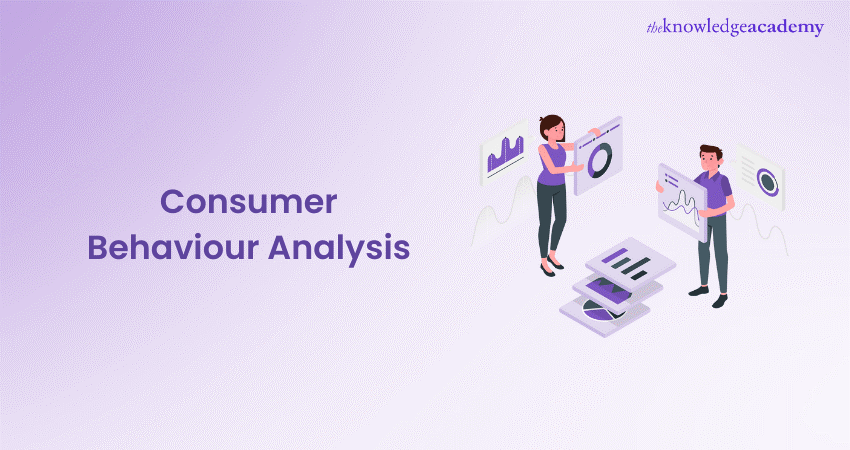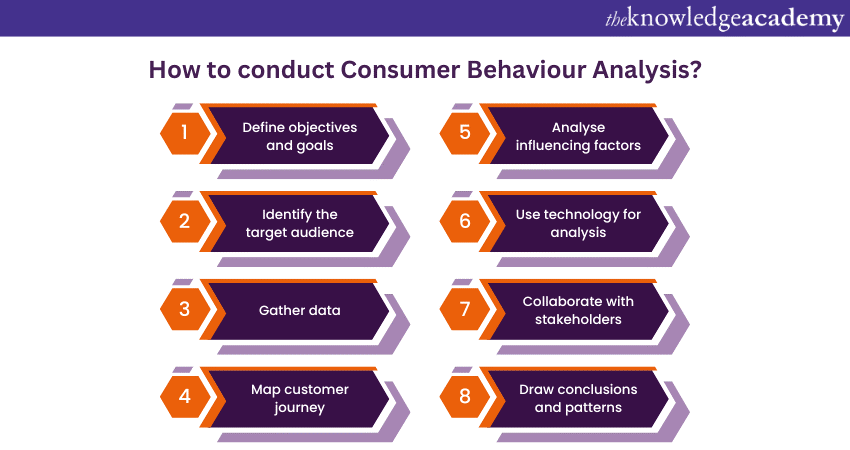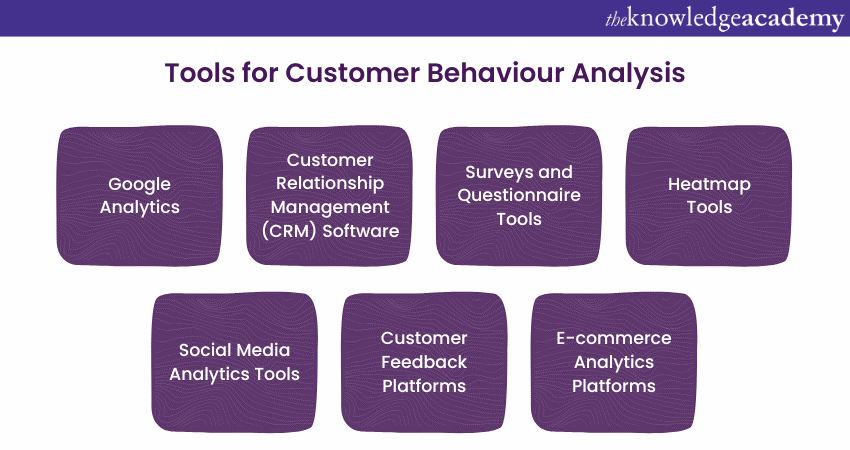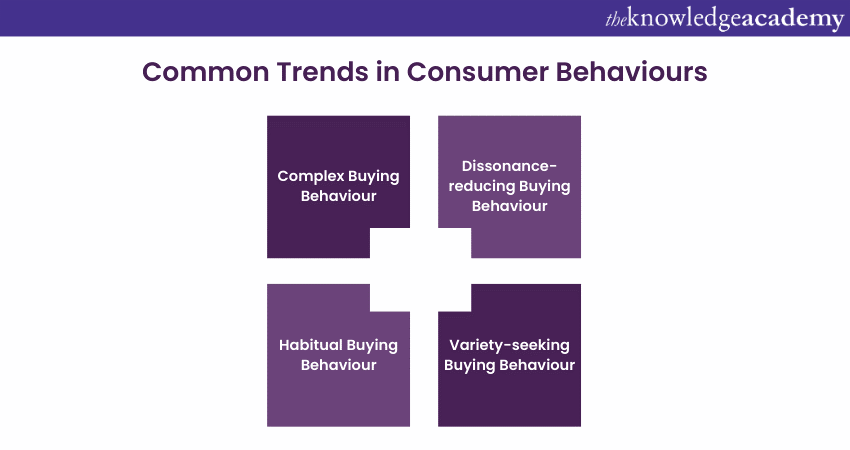We may not have the course you’re looking for. If you enquire or give us a call on + 1-866 272 8822 and speak to our training experts, we may still be able to help with your training requirements.
Training Outcomes Within Your Budget!
We ensure quality, budget-alignment, and timely delivery by our expert instructors.

Imagine being able to read the minds of your customers, understanding their deepest desires and motivations. While mind-reading might be a fantasy, Consumer Behaviour Analysis brings us as close as possible to that ideal. By dissecting the subtle cues and patterns in consumer actions, businesses can unlock insights that lead to more targeted and effective strategies.
In an increasingly competitive landscape, Consumer Behaviour Analysis is more than just a tool—it's a necessity. It allows companies to tap into the psychology behind purchasing decisions, turning data into actionable strategies that drive success. Understanding why customers make the choices they do is key to staying ahead of the competition and delivering products and services that truly resonate. Let’s dive in to learn more!
Table of Contents
1) What is Consumer Behaviour Analysis?
2) How to Conduct Consumer Behaviour Analysis?
3) Tools for Analysing Customer Behaviour
4) Ethical Considerations in Consumer Analysis
5) Common Trends in Consumer Behaviours
6) Conclusion
What is Consumer Behaviour Analysis?
Consumer Behaviour Analysis examines how individuals, groups, or organisations buy, utilise, and eliminate products, services, or ideas. It explores the psychological, social, and economic factors that impact these choices. This examination aids companies in comprehending the factors influencing consumer decisions and adjusting their products to address those needs.
Consumer Behaviour Analysis fundamentally explores how individuals act as consumers. It examines why consumers choose specific brands, how they react to marketing communications, and the elements that impact their buying choices. These might encompass individual tastes, cultural impacts, societal expectations, or financial circumstances.
Businesses utilise this analysis to forecast Consumer Trends and adjust their strategies accordingly. By understanding why consumers make decisions, companies can develop more impactful Marketing strategies, create superior products, and enhance customer contentment.
Consumer Behaviour Analysis also strongly emphasises the ethical considerations of Marketing strategies. It encourages companies to consider their products' societal and environmental impacts, fostering a sense of responsibility and respect in their business practices.
Analysing Consumer Behaviour is essential for businesses aiming to remain competitive. It offers crucial information about consumer tastes, enabling companies to make educated choices that meet market needs.
How to Conduct Consumer Behaviour Analysis?
Conducting Consumer Behaviour Analysis in Marketing involves a systematic approach to understanding and analysing the factors that influence consumers. Here's a step-by-step process:

1) Define Objectives and Goals
Clearly articulate the purpose of your Analysis. Identify specific goals such as understanding purchasing patterns, improving customer satisfaction, or identifying opportunities for product/service enhancement.
2) Identify the Target Audience
Determine the customer segment you want to analyse. Consider demographics, psychographics, and behavioural characteristics to define your target audience.
3) Gather Data
Collect relevant data through various sources, such as the following:
a) Surveys and Questionnaires: Design surveys to capture customer opinions and preferences.
b) Interviews: Conduct one-on-one interviews for more in-depth insights.
c) Observational Research: Observe customer behaviour in real-life settings.
d) Data Analytics: Utilise tools to analyse online behaviour, purchase history, and other relevant digital data.
e) Utilise Customer Segmentation: Segment your customer base based on common characteristics. Identify differences in behaviour among various segments.
4) Map Customer Journey
To conduct Consumer Behaviour Analysis, understand the entire customer journey. Learn how they build initial awareness of a product or service, understand their final purchase and keep track of post-purchase experiences.
5) Analyse Influencing Factors
Identify and analyse factors influencing customer behaviour, including cultural, social, personal, and psychological elements.
6) Use Technology for Analysis
Leverage technology and data analytics tools to process and analyse large datasets efficiently. This may include leveraging Customer Relationship Management (CRM) systems, Web Analytics, and Machine Learning algorithms.
7) Collaborate With Stakeholders
Work closely with different departments within your organisation, including marketing, sales, and consumer service, to gather diverse perspectives and insights.
8) Draw Conclusions and Patterns
Analyse the collected data to find conclusions and identify patterns in customer behaviour. Look for trends, preferences, and commonalities among different customer segments.
Ready to elevate your understanding of Consumer Behaviour to new heights? Join our exclusive Consumer Behaviour Masterclass now!
Tools for Analysing Customer Behaviour
Analysing Customer Behaviour involves the use of various tools and technologies to gather, process, and derive insights from data. Here are some tools commonly used in Consumer Behaviour Analysis:

1) Google Analytics: It is Web Analytics tool designed to track and report website traffic. It provides crucial insights into user behaviour, including the number of times the pages visited, time spent on the website, and the geographic location of visitors. Additionally, it helps businesses understand the sources of traffic, user demographics, and the effectiveness of marketing efforts.
2) Customer Relationship Management (CRM) Software: CRM software is essential for managing customer interactions, tracking leads, and centralising customer data. Tools such as Salesforce, HubSpot, and Zoho CRM enable businesses to build and maintain relationships with customers by organising and analysing data related to customer interactions, sales, and support.
3) Surveys and Questionnaire Tools: Tools like SurveyMonkey, Google Forms, and Typeform play a crucial role in gathering direct feedback from customers. Through customisable surveys and questionnaires, businesses can gain insights into customer preferences, satisfaction levels, and areas for improvement.
4) Heatmap 5ools: Heatmap tools like Hotjar and Crazy Egg visually represent user interactions on websites. By providing a graphical overlay of where users click, move, and scroll, these tools offer a deeper understanding of how visitors engage with web content. This information is valuable for optimising website design and improving user experience.
5) Social Media Analytics Tools: Social Media Analytics tools such as Hootsuite, Buffer, and Sprout Social help businesses analyse interactions and engagement across various social platforms. These tools track metrics like likes, shares, and comments. Thus, they provide insights into the effectiveness of social media campaigns and help businesses refine their social media strategies.
6) Customer Feedback Platforms: Platforms like Trustpilot, Yelp, and Zendesk focus on collecting and analysing customer reviews and feedback. Businesses can use these platforms to monitor customer sentiment, address concerns, and enhance their reputation by responding to customer reviews and improving overall customer satisfaction.
7) E-commerce Analytics Platforms: E-commerce analytics platforms, including Shopify Analytics and Magento Analytics, are tailored to track online shopping behaviour. These tools analyse data such as purchase history, cart abandonment rates, and customer preferences, enabling businesses to optimise their online storefronts and marketing strategies for better conversions.
Achieve marketing excellence with our Strategic Marketing Course – Register now!
Ethical Considerations in Consumer Analysis
Ethical considerations in Consumer Analysis are paramount as businesses increasingly depend on data to understand and influence Consumer Behaviour. Here are key ethical considerations when performing Consumer Behaviour Analysis:
1) Privacy Concerns: Ethical Consumer Analysis requires a commitment to safeguarding individual privacy. Businesses must be transparent about data collection methods, the type of data being collected, and how it will be used. Obtaining informed consent from consumers before collecting their data is crucial.
2) Informed Consent: Obtaining informed consent involves clearly communicating to customers how their data will be used and obtaining their agreement. This ensures that consumers are aware of and comfortable with the information being collected and its intended purpose. It is essential to avoid deceptive practices and provide consumers with the option to opt out of data collection.
3) Data Accuracy and Transparency: Businesses must strive for accurate representation and interpretation of consumer data. Transparency in reporting findings and methodologies is crucial to maintaining trust. Misleading interpretations or biased analyses can harm consumers and erode trust in the business.
4) Data Security: Safeguarding consumer data from breaches or unauthorised access is an ethical imperative. Businesses should invest in robust cybersecurity measures to protect sensitive consumer information. Regularly updating security protocols and promptly addressing any breaches are essential ethical practices.
5) Avoiding Discrimination: Consumer Analysis should not perpetuate or reinforce social inequalities or discriminatory practices. It's crucial to ensure that algorithms and models used for analysis are fair and unbiased. Businesses must actively work to identify and rectify any biases that may be present in their data or analytical processes.
6) Responsible Marketing Practices: Ethical consumer behavior analysis ensures that businesses responsibly use insights, avoiding the exploitation or manipulation of consumer vulnerabilities. It is crucial for businesses to represent their products or services honestly and steer clear of deceptive advertising.
7) Balancing Profitability and Ethical Standards: Businesses must find a balance between achieving their financial objectives and upholding ethical standards. Pursuing profits should not come at the expense of ethical considerations. Adopting ethical Consumer Analysis practices can, in the long term, contribute to a positive brand image and customer loyalty.
8) Anonymisation and Aggregation: When possible, businesses should anonymise and aggregate data to protect individual identities. This helps in analysing trends and patterns without compromising the privacy of individual consumers.
9) Community and Social Impact: Consider the societal impact of Consumer Analysis. Ethical practices should address both individual interactions and broader community consequences. . Businesses should actively contribute to positive social impact and be aware of the broader implications of their consumer analysis efforts.
Amplify your business marketing strategies with our Business Marketing Strategies Training – Sign up now!
Common trends in Consumer Behaviours
Consumer buying behaviour encompasses a variety of behaviours that individuals exhibit when making purchasing decisions. Four primary types of consumers buying behaviour are as follows:

1) Complex Buying Behaviour: This behaviour is observed when consumers are involved in a high-value, significant purchase that is infrequent. The Decision-making Process is extensive and involves a considerable amount of research and evaluation of alternatives. Consumers in complex buying behaviour may seek information from multiple sources and carefully weigh the pros and cons before making a decision.
2) Dissonance-reducing Buying Behaviour: In dissonance-reducing buying behaviour, consumers make a significant purchase, but the level of involvement is lower compared to complex buying behaviour. After the purchase, consumers may experience post-purchase dissonance or doubt about their decision. Marketers need to reassure customers through follow-up communication, customer support, and guarantees to reduce any feelings of regret.
3) Habitual Buying Behaviour: Habitual buying behaviour is observed when consumers make low-involvement, routine purchases. These are frequently occurring, everyday items where consumers do not invest much time or effort in the decision-making process. Brand loyalty and familiarity play a significant role in habitual buying behaviour. Marketing efforts often focus on maintaining and reinforcing these habits.
4) Variety-seeking Buying Behaviour: Consumers exhibiting variety-seeking behaviour seek occasional change and variety in their purchasing decisions. This behaviour is often observed in low-involvement products where consumers may be willing to experiment with different brands. Marketers should highlight promotions, novelty, and unique selling points to attract variety-seeking consumers and encourage trial purchases.
Conclusion
Exploring Consumer Behaviour Analysis from a global perspective uncovers a dynamic landscape influenced by various factors. We hope this blog has helped you understand how to analyse Consumer Behaviour, use analytical tools, consider ethical aspects, and more.
Elevate your marketing skills with our dynamic Marketing Courses today!
Frequently Asked Questions

Various factors like culture, society, individual traits, psychology, quality, pricing, and promotional tactics significantly shape Consumer Behaviour.

Analysing Consumer Behaviour aids in improving marketing tactics by focusing on individual consumer needs, enhancing interaction, and raising conversion rates.

The Knowledge Academy takes global learning to new heights, offering over 30,000 online courses across 490+ locations in 220 countries. This expansive reach ensures accessibility and convenience for learners worldwide.
Alongside our diverse Online Course Catalogue, encompassing 19 major categories, we go the extra mile by providing a plethora of free educational Online Resources like News updates, Blogs, videos, webinars, and interview questions. Tailoring learning experiences further, professionals can maximise value with customisable Course Bundles of TKA.

The Knowledge Academy’s Knowledge Pass, a prepaid voucher, adds another layer of flexibility, allowing course bookings over a 12-month period. Join us on a journey where education knows no bounds.

The Knowledge Academy offers various Digital Marketing Courses, including the Google Analytics Certification, Google Ads Certification, and Digital CRM Masterclass. These courses cater to different skill levels, providing comprehensive insights into Guide to Google Analytics for Beginners.
Our Digital Marketing Blogs cover a range of topics related to Digital Marketing, offering valuable resources, best practices, and industry insights. Whether you are a beginner or looking to advance your Digital Marketing skills, The Knowledge Academy's diverse courses and informative blogs have got you covered.
Upcoming Digital Marketing Resources Batches & Dates
Date
 Content Marketing Course
Content Marketing Course
Fri 10th Jan 2025
Fri 14th Feb 2025
Fri 11th Apr 2025
Fri 13th Jun 2025
Fri 8th Aug 2025
Fri 26th Sep 2025
Fri 21st Nov 2025







 Top Rated Course
Top Rated Course



 If you wish to make any changes to your course, please
If you wish to make any changes to your course, please


